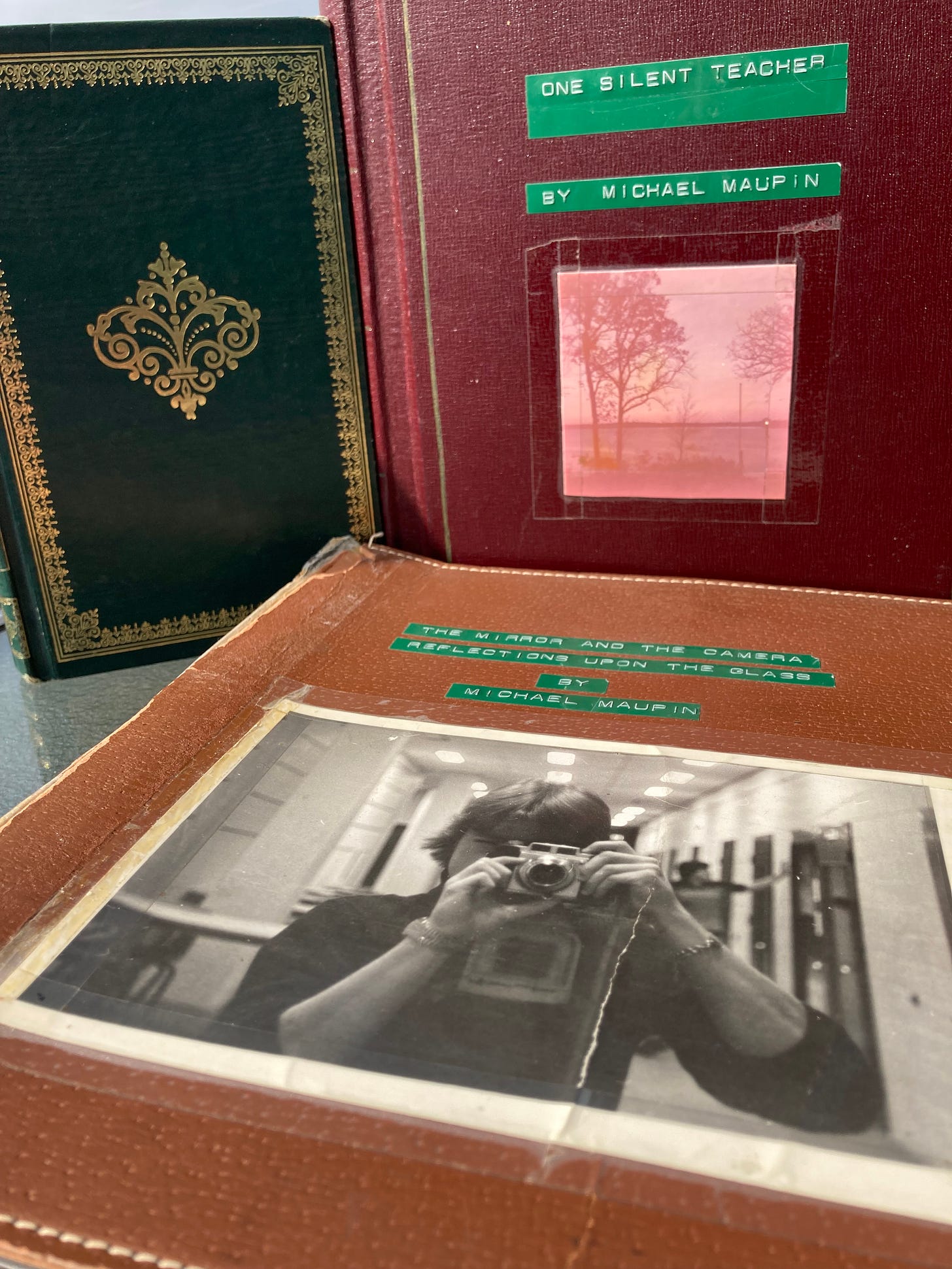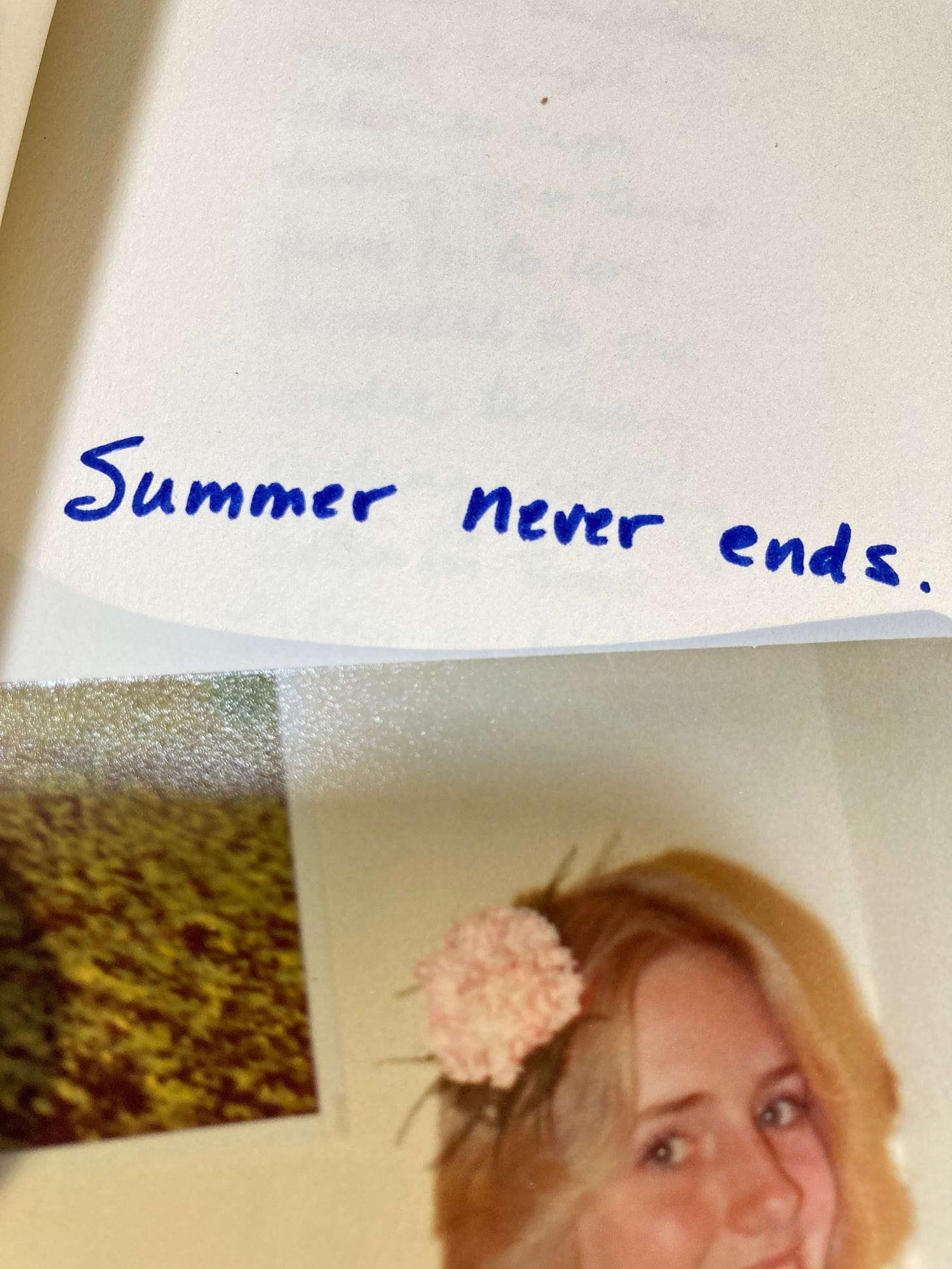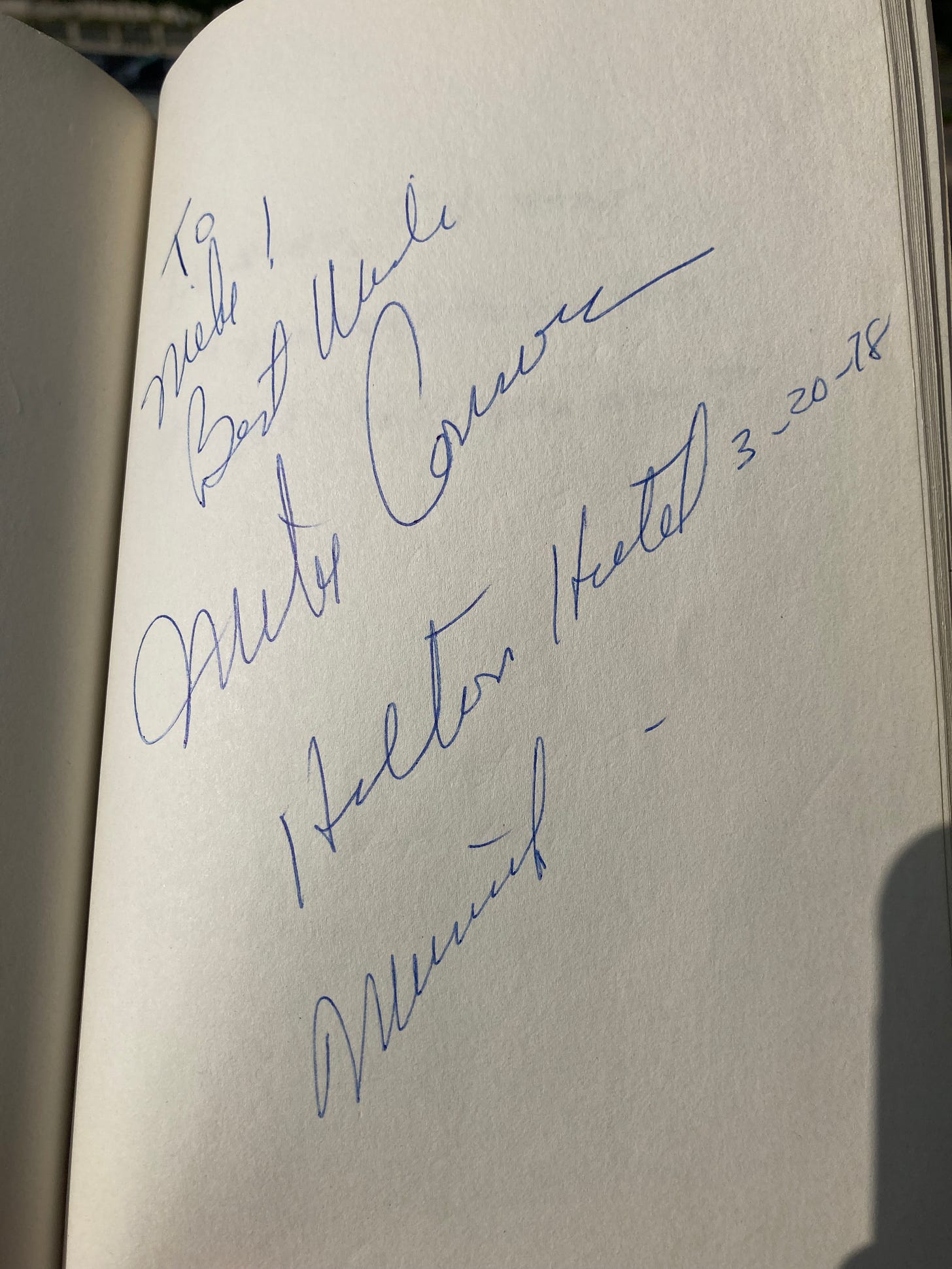Every Day I Write the Books
Part 3: On uncommonly commonplace books and bigger-than-pocket-sized notebooks
“Don’t tell me you don’t know the difference
Between a lover and a fighter,
With my pen and my electric typewriter…” —Elvis Costello, “Every Day I Write the Book”
Those tiny locked books with their cramped ruled lines?
Well, they just weren’t cutting it anymore.
What they did—and this is totally to their credit—was make me feel more expansive…and whoa, Mama, is that a great feeling.
So, over the five-year period writing the early diaries (1973-78), I experimented with larger books—first photo albums, with sturdy covers and space to write, then blank journals for drawing and free-form “whatever.”
Didn’t know it at the time, but I’d stumbled upon the age-old practice of creating a “commonplace book.” Their history is worth a deep dive (and still breaking news to me), so I’ll leave it to the experts if you want to go down that rabbit hole. All I knew in those early days was I needed more space to write, draw, whatever.
Les voilà…

Of the three pictured, the smaller green notebook (“My Siberian Khatru,” after the Yes song) was the commonplace book, the maroon book (“One Silent Teacher”) an amalgam of photos, poetry, memorabilia, and the front book (“The Mirror and the Camera”) a straight-up photo journal.
Yeah, I know, I know.
Sure grabbed that “expansive” thing like a mo-fo.
But it was out of pure joy and playfulness. It was a riot to build these things, for whatever purpose they served at the time (in all honesty, the green volume is full of adolescent pining for a high school sweetheart—*sigh*—well, it was what it was back when it was).

Again, two things I’d refer back to: a sixth grade teacher assigning our own daily journals: “Design it yourself!” That, and a much earlier memory of the girl who lived next to my maternal grandparents’ house and who used to bring armloads of children’s picture books. Her loving attention to my young mind will never be forgotten (except her name, as I only remember her as “Ben Amie’s daughter”). There’s even a CITD post in her honor (and yup those two photos of her reading to me is Toddler Me).
Unfortunately, 40 plus years are taking its toll on the photo journal, and it will need to be rebound to drag itself into the 21st century (…goes to look for a roll of duct tape).
These three volumes are the first things to examine, as well as a poetry book I attempted in 1976 but never completed, and some pocket-sized notebooks that I began writing in 1979-80 and still carry around in a larger format to this day. Overall, the volumes are peripheral to the whole self-reflection ecosystem, acting more as an archive or record of a moment in time. That doesn’t mean they couldn’t be useful for a future story idea or to verify a person, location, or thing from the past. I just don’t go back to them very often.
With “Khatru,” I did share it with friends and even took it to Germany when I was an exchange student there my high school senior year, at one point getting Mannix actor Mike Connors to autograph a page when we stayed at the Munich Hilton.

The hefty “One Silent Teacher” volume was never completed as I stopped adding to it after high school. It’s divided into sections by photo or artwork topic, including drawings, early collages, some poetry, lyrics, and short essays.
“The Mirror and the Camera,” in turn, was strictly photos, mostly from high school, with captions and not a lot of commentary. I tried to let the images speak for themselves—so it’s essentially a photo album.
Lastly, that shot at a poetry book. In my teenage years I liked to play with language (guess I still do). It’s also the only time I showed my brother any of my poetry which, to my amazement, this poem caused him to chuckle:
If the family remembers me for anything, I guess it’s gonna be this.
Finally—ah, the notebooks.
These are keepers, chock-full of nuggets that might be useful for future essays, stories, screenplay dialogue, heck, even poetry if I ever wade back into that brackish pool. In fact, the notebooks were so vital that on May 27, 1991, I started transcribing them (typing them into a word processor, printing them out, and compiling them into 8-1/2 x 11 in. pages, totaling 65 pages) so I could reference them chronologically—completely in keeping with the idea of a “self-reflection ecosystem.”
Okay, here’s a fun idea.
Let’s test out the ecosystem and see what we come up with. For example, the notebook transcriptions commenced as mentioned in May 1991. So many questions: Do I have a journal entry for that day? If so, what happened? Where might this inquiry lead?
Let’s find out.
First off, there’s a gap. The 1991 journal was hugely incomplete, and if I recall I was in a precarious living situation in St. Paul, Minnesota, with the gap extending from Monday, March 4, 1991, to Tuesday, August 20th. That August entry starts off somewhat cryptically:
“I’m making time to get back to this with some newsworthy events both in the world and my life. It’d kill me later if I didn’t somehow get this down for later. I’m spooked by the possibility of future ‘significance.’ Let it be known that the month of August is fast-becoming the best month of the summer of 1991—rivaled only by June. July was a limbo—I injured my arm out at the folks’ on July 9th, and it was black & blue for at least 3 weeks.”
Apparently that August day I met up with a high school friend for brunch while he was working a beer tent at the Uptown Minneapolis Annual Art Fair. There I met a woman named Khaki (the journal gleefully states, “She was chatting me up!). Well, fun aside but that was that, and “Khaki” completely fell off the journal’s radar.
If I had to mentally backtrack (which is part of the ecosystem), I’d guess there was a lot of downtime at the St. Paul apartment and I went through notebooks with the mindset to transcribe them for future reference. Those were shaky times, with the Gulf War beginning the year and the August entry announcing that “Boris Yeltsin is the hero of the hour & ‘Gorby’ is back in Moscow.”
Priceless.
And while we didn’t hit the ringer with the above example, it just goes to show you what the ecosystem is capable of. Some days you win, some days you come up short. All part of the game, kids.
Some Parting Thoughts
So, first there was the cute, little, locked baby diaries which segued into larger handwritten journals that later became word processor paste-ups from commonplace books to photo journals and then portable, pocked-sized notebooks into a transcribed, easy-to-reference compilation volume.
Not too shabby for a couple years’ worth of whatever you want to call it: personal obsession, manic hyper-attention—or just one writer’s due diligence? You tell me.
Still, no doubt they’re all feeding into each other and creating more writing, more ideas, more memories—and possible future goals.
Here’s the gist: If you’re interested in creating your own self-reflection ecosystem, start small (cute, widdle-baby diaries optional). Shake off any niggling feelings of having to do “everything all at once.” If you get tired of writing in your journal, for God’s sake, stop. Try something else: play music, draw or sketch, solve a jigsaw puzzle, do yoga, take a walk, have something to eat. Go convince the cat the laser pointer can be captured and killed.
But whatever you do, don’t let the cramped, preprinted lines—the rules or the rulemakers—keep you from expanding.
It’s all good and, after awhile, you’ll grow to appreciate what you’ve built.
Life is short, art is long.
So they say.
I say enjoy the ride while you’re here.
Next up in the series: More on pocket-sized notebooks and monster-huge, drawing-board-weighting sketchpads full of calendar notes and doodles. FUN. Thanks again for subscribing and see you next week!









I just skimmed through my journals from decades ago to see if they had a single drawing, picture or anything besides a written word. Nothing. In fact, I couldn't even find a word not written in cursive! But having little talent in drawing, I’m not surprised.
Of course, I do have photos from that time, which got me thinking. Find journal entries which connect to or describe the photo and vice versa. I did do this recently and discovered that a photo from 35 years ago barely scratched the surface of how I felt during that moment. Interesting experience!
Part 4's gonna need more love, subscribers. I threw this up on Notes this afternoon:
https://substack.com/@michaelmaupinstoryshed/note/c-20993831?utm_source=notes-share-action&r=39oh